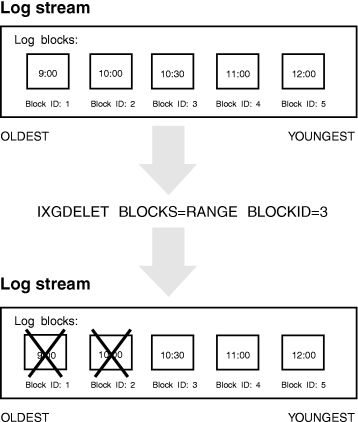If you specify BLOCKS(ALL) to delete all of the blocks in the log stream, system logger immediately marks as deleted all the blocks that exist at the time of the request. If other applications are writing to the log stream concurrently with the delete request, there might be log blocks in the log stream even after the IXGDELET BLOCKS(ALL) request is processed.
When you want to delete a subset of log blocks, specify BLOCKS(RANGE)
and a block identifier on the BLOCKID parameter. System logger marks
as deleted all the log blocks older (written earlier)
than the specified log block. See Figure 1 for an
illustration of how BLO CKS(RANGE) works. Note that the block specified
in BLOCKID is not deleted.
Figure 1. Deleting a
Range of Log Blocks
